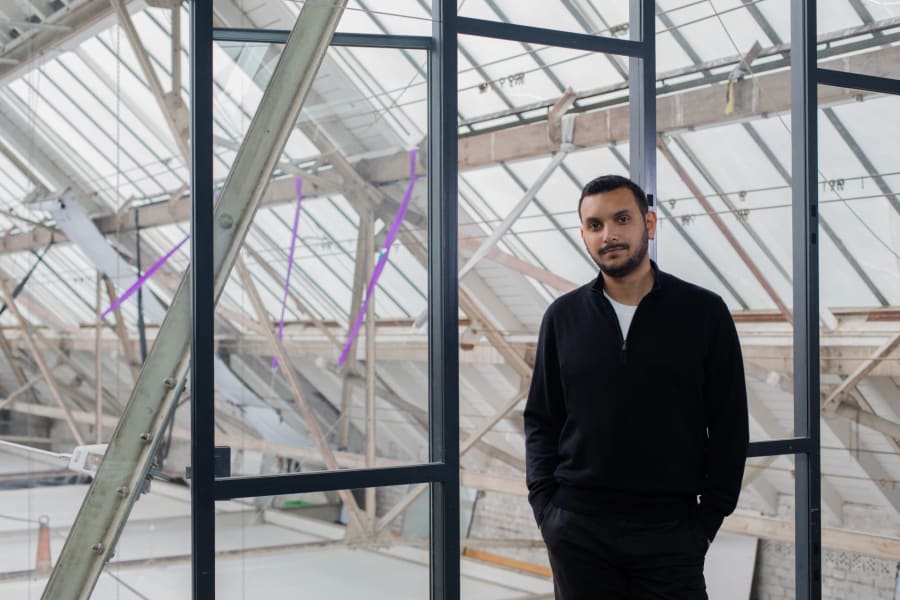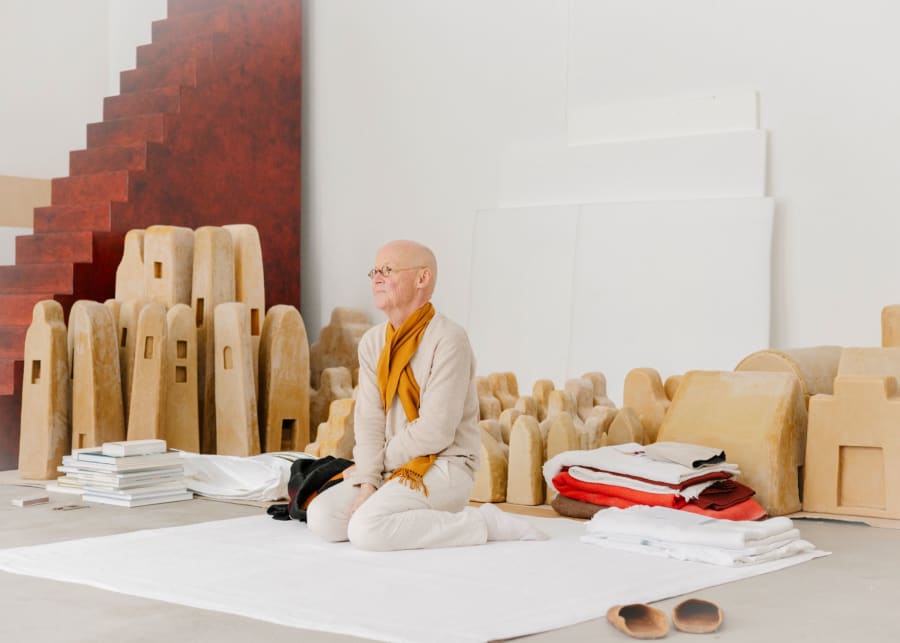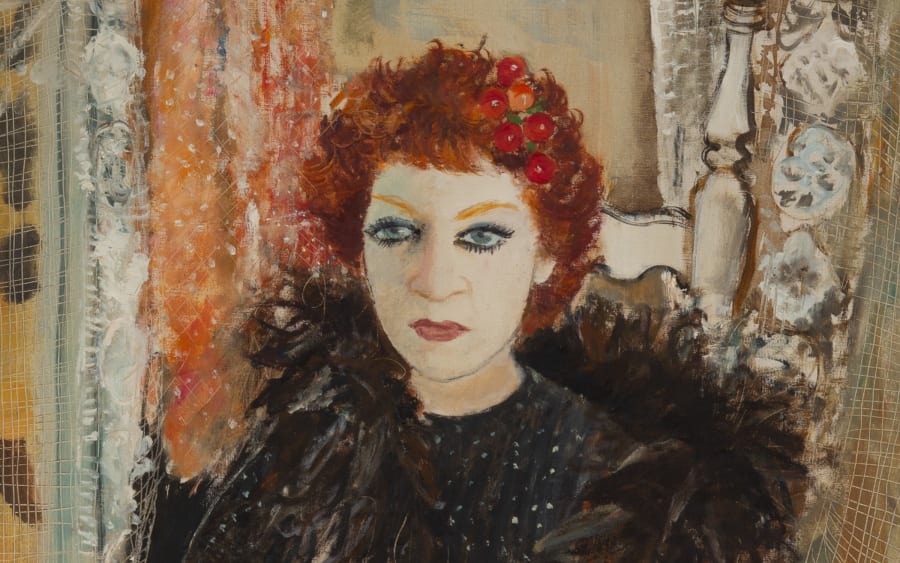The Swiss canton of Ticino stands apart. The only region of the Helvetic confederation where Italian is the official language, its settlements are nestled between lakes and sharply folded mountains on the sun-kissed south side of the Alps, long making it a popular leisure destination for visitors from the north. Yet in little over a decade, the area has raised its cultural profile significantly, with recent efforts by both public and private entities to elevate the local art scene and make it a noteworthy player on the crowded international circuit. While its picturesque scenery and architectural vernacular borrow much from the Bel Paese south of the border, and its population is just half the size of the neighboring province of Como in Italy, impressively Ticino boasts six contemporary art museums, several foundations, and more than fifty galleries.
The Ticino region is no stranger to providing stimulus for creatives. In the early part of the 20th century, the community of Monte Verità, which overlooked the town of Ascona on Lago Maggiore, became an important gathering place for artists. Founded by anarchists, this community then witnessed the arrival of Dadaists and Expressionists who were to leave a lasting impression on the Western European art world prior to the outbreak of World War II. Fast forward to today and one encounters a new set of venues that place art front and center, from private collections and foundations to museums. A permanently-installed exhibition, curated by Harald Szeemann, occupies one of the original buildings: the only Szeemann project still on view. The famed Swiss curator spent his life living and working in the canton.
In the lakeside town of Locarno, near Ascona, with its palm trees and pedestrian alleyways, visitors are greeted by a prominent red cube that hosts the Fondazione Ghisla Art Collection. Inside the windowless structure covered with a metallic network of iron grilles resides the artworks assembled by the husband-and-wife team of Pierino and Martine Ghisla. Founded a decade ago, the collection represents a 40-year quest to acquire works from the latter half of the 20th century up to the present day, including pieces from the Pop and New Dada movements.
‘The idea was to create a space which is intimate, as if you were entering our home,’ explains Pierino Ghisla. ‘We have given a lot of consideration to how each of the artworks coexists with the other pieces on the wall.’ To mark the foundation’s 10th anniversary, the space is currently presenting the exhibit ‘Natura/Colore/Forma’ by Renato Tagli, a graphic artist from Locarno. Yet another foundation celebrating ten years housed inside a modernist structure is the nearby Fondazione Marguerite Arp, with works by the German-French sculptor and painter Jean Arp along with pieces by Marcel Duchamp, Alberto Giacometti, and other 20th-century artists.
Locarno is also home to the acclaimed Locarno Film Festival which takes place each August. Given its small footprint – the population hovers around 16,000 – it is easier for those in the local art scene to interact. A longstanding spot for cultural exchange is the non-profit La Rada, a 200m2 space inside the former Swisscom building which seeks to present emerging names and organizes collateral events such as Sunday brunches to promote interactions with those in the creative community.
Since 2022, independent curator and photographer Yimei Zhang has served as artistic director of La Rada. ‘In such a small environment as ours it is easier to create a close-knit community. Compared to a big city, there is a constant interest in seeking out new shows to attend,’ explains Zhang, who studied at the Brera Academy in Milan.
While La Rada’s current show, ‘XXXTRAORDINARY’, brings together the likes of Colombian-born photographer Guadalupe Ruiz and Switzerland’s Jérôme Stünzi, past exhibitions have also seen work by prominent figures on display, including conceptual painter Caroline Bachmann.
The primary draw for outsiders is Lugano, the largest city in Ticino and an important cultural hub. The city’s lakeside downtown area was given a considerable boost in 2015 with the construction of LAC, a polyfunctional arts complex housed in a statement building designed by local architect Ivano Gianola that greets visitors passing along the waterfront.
Within the walls of LAC, which contains a 1,000-seat concert hall, sits the principal exhibition space of the Museo d'arte della Svizzera italiana, or MASI, over three floors. Here, guests may peruse its 1,900m2 gallery dedicated primarily to 20th century and contemporary art. Its current offering presents ‘Sculpting Time’ which focuses on the work of Alexander Calder as well as the largest solo exhibition to date by Geneva-born artist Shahryar Nashat entitled ‘Streams of Spleen’.
For MASI director Tobia Bezzola, who has been in charge since 2018, the challenge has been how best to serve the museum’s two audiences: the 64,000 residents of Lugano and its surrounding area as well as the large number of foreigners and Swiss German visitors in search of cultural attractions. ‘Clearly this building and our favorable location on the lake gives us a leg up. We are a region driven by tourism and as such we need to ensure an offering that is wide ranging and engaging for art lovers.’
The numbers point to success for Bezzola, as annual visitors last year surpassed 100,000 – a return to pre-pandemic levels. In addition, across the street from MASI is the region’s most important private collection of art, the Collezione Giancarlo e Danna Olgiati. Made up of over 600 artworks, the collection has been accessible to the public since 2012. ‘We are part of a recent phenomenon here in Ticino that has seen private individuals become key actors in the cultural domain. Elsewhere, in major European cities, this has a deeper tradition,’ explains Danna Olgiati, whose experience includes 30 years working as a gallerist in Milan and Modena. ‘Our collection is the culmination of a lifelong passion for art. There is a museum-like rigor within the collection which goes beyond artworks to include archival material.’
The Olgiati collection stands out for its emphasis on Italian artists, notably works by the Futurists and later movements such as Arte Povera as well as eye-catching pieces by Wolfgang Tillmans and Yves Klein; the latter will be the focus of an upcoming exhibition later this year with an installation by famed Ticino-born architect Mario Botta.
Another distinguished name in the private sphere is the Buchmann Galerie in Lugano. A fixture on the contemporary scene since 1975 when it opened its doors in St. Gallen, Buchmann’s presence in Ticino dates back to 2013. Milan-born Elena Buchmann was initially drawn to the region for its sun. ‘In Ticino you have many homes with gardens and we wanted to focus on presenting large scultpural projects. The place still feels like an island of sorts,’ she says. Her gallery, now occupying space inside an early 20th-century shopping mall, represents a roster of artists including Wolfgang Laib and British sculptor Tony Cragg, whose drawings were featured in a recent show alongside the work of Mario Merz.
Perhaps the most high-profile private entity to throw its hat into the ring of late is Swiss fashion house Bally. In 2006, the brand established the Bally Foundation and has recently begun to use the prestigious lakefront Villa Heleneum in Lugano as an exhibition venue. It is overseen by curator Vittoria Matarrese, who has unveiled a fresh and inspiring program. In 2023 they staged, ‘Sometimes we are eternal’, the first solo show by Saudi-American artist Sarah Brahim.
‘I often look to the region for inspiration to find ideas so that we remain tied to our location,’ explains Matarrese as she puts the finishing touches to her latest project, ‘Arcadia’, which brings together pieces by 19 artists, including Vanessa Beecroft and watercolors by Hermann Hesse, to explore how the region has been transformed following the construction of the Gotthard railway tunnel. That engineering marvel led to an influx of tourism, intellectuals, and aristocrats, as well as artistic communities such as the aforementioned Monte Verità, where Hesse was a keen visitor. The title, ‘Arcadia’, refers to a region in Greece, described by Virgil, that was devoted to the pleasures of nature and song, a place of tranquility – a fitting description for the foundation’s idyllic and leafy lakeside setting.
The exhibition expertly traces how Ticino transformed itself into Switzerland’s Riviera in the 1930s via the introduction of exotic flora as the well-to-do created impressive gardens for their lakeside homes. The once sedate pre-Alpine region was now energized by the arrival of Chinese mandarin trees, palms from Japan, and other tropical species. ‘The landscape here is an attractor and draws in both the visitor and the artist,’ adds Matarrese. Drawing on the history of the Villa Heleneum, erected in the 1930s as a homage to the Petit Palais and its gardens (complete with a fake grotto) in Versailles, France, the exhibition thinks through how visitor expectations and fantasies can materially transform entire regions.
Taking the transplanted palm tree as a starting point, the show includes trompe l’oeil wax statues colored in local marble by artist duo Ittah Yoda and Zuzanna Czebatul’s plastic historical reconstructions that help to evoke the image of a modern day Arcadia. Matarrese’s careful curation questions the way in which contemporary artists compose and bring out new emotional ecosystems as they explore the interplay between nature and artifice. The exhibit presents an imaginary utopia of a Mediterranean-like environment which outsiders, especially those arriving from colder, northern climes, have long projected onto the land that encapsulates Ticino, and lasts until this day.
Since 2007, Ivan Carvalho has been the Milan correspondent for Monocle magazine. The California native also writes for Konfekt magazine and is a contributor to NetJets magazine and wine and food publications Revista de Vinhos and Revista Gula.
Caption for header image: View of a street in Ascona. Photography by Luigi Fiano for Art Basel.
Published on June 4, 2024.


